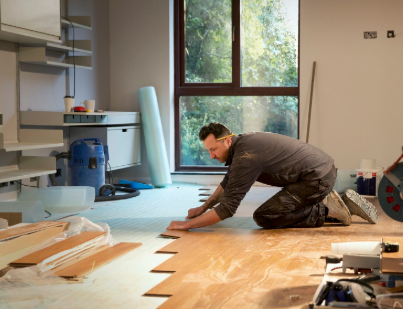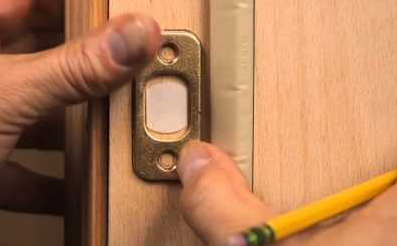- Details
- Category: House Cleaning Tips and Tricks
 Design creativity and ability
Design creativity and abilityHow can you understand exactly how great a specified designer's capacity is? Assess the length of time they've been designing kitchens. Ask to see a few examples of the work.
Technical comprehension
Your kitchen designer ought to have architectural design and building expertise. He or she wants to have a fantastic understanding of structures and business trends to provide you with a state-of-the-art kitchen layout.
Product comprehension
Providing the ideal products and appliances to your kitchen additionally requires knowledge and ability. Fantastic kitchen designers will understand reputable cabinet manufacturers and appliance companies to utilize.
Expertise
Everybody must begin somewhere, however for creating such a large monetary investment in your house, you wish to select a designer with expertise.
The capacity to understand client Wants
Be cautious about all of the facets of kitchen layout you desire. The very best kitchen designers can offer ideas and support and direct you to attain a kitchen layout you're completely satisfied with. They'll want to obey every one your suggestions and concerns. Always keep in mind that you're the customer, which means you're able to set the phrases.
Communication abilities
Kitchen designers need to communicate clearly with construction contractors, technicians, contractors and other professionals to receive your job done in time and on budget.
Testimonials
A recommendation by family or friends is a great place to begin, but do not let this be the sole factor telling your choice. Consult your favorite kitchen designer if you may talk with one of the past customers. Assess whether your designer maintained to deadlines and reacted immediately to any issues.
Qualification and credentials
Ensure that your kitchen designer gets the credentials and qualifications maintained. You need to know Your designer not only has an eye for good design, but That they have researched and comprehend structure, plumbing and electric technologies. They ought to stick to a professional code of behavior too.
- Details
- Category: House Cleaning Tips and Tricks
 Insert the tip of a level pry bar behind the trim around the door. There are three pieces. Pop them off to uncover a hole between the pillar and the divider encircling at the top and on the two sides. Haul out any nails utilizing askew forceps. Put the trim side to utilize later.
Insert the tip of a level pry bar behind the trim around the door. There are three pieces. Pop them off to uncover a hole between the pillar and the divider encircling at the top and on the two sides. Haul out any nails utilizing askew forceps. Put the trim side to utilize later. Tap out the entirety of the wooden shims at irregular interims around the edge of the door between the pillar and the stud confining. Utilize a mallet and the tip of a screwdriver to drive out the shims. Gather them to utilize when you introduce the new door.
Addition the edge of a responding saw between the pillar and the stud encircling. Turn it on and slide it around the two sides and at the top to cut any nails that are holding the support to the confining. Haul the door and doorjamb out of the opening.
Stand the substitution door and doorjamb unit inside the opening. Spot a level on the two sides to help get it vertically straight in the opening. Tap one of the cedar shims that you evacuated before (or utilize new shims) on the two sides to verify it inside the opening. Start tapping in shims on the two sides and at the top. Substitute tapping in wedges from side to side with the goal that the hole on the two sides continue as before.
Open and close the door a couple of times. On the off chance that the door sticks in the pillar, evacuate or include shims either side until the door closes and closes easily.
Shoot 2 1/2-inch finish nails through the doorjamb into the stud surrounding at the top and base. Space them each 8 inches. Shoot the nails as near the doorstop as would be prudent. The doorstop is an inclined bit of wood that stops the door on one side.
Spot the trim back on the sides that you expelled it from. There will be a line on the paint to show where to put it. Supplement 1/4-inch finish nails in the current nail openings in the trim and nail every one of the three pieces on with hammer. Drive the nail heads somewhat underneath the outside of the wood, utilizing the mallet and a nail set.
Fill the nail gaps with wood putty utilizing a putty blade on the off chance that you plan on completing or painting the door later. On the off chance that the door has been recently completed, utilize a putty colored pencil to fill the openings.
Things You Will Need
Prybar
Askew pincers
Sledge
Screwdriver
Responding saw
Prehung door
48-inch level
Cedar shims (discretionary)
Finish nailer
2 1/2-inch finish nails
1/4-inch finish nails
Nail set
Wood putty (discretionary)
Putty blade (discretionary)
Putty colored pencil (discretionary)
Tip
Some prehung units don't accompany stops appended. Utilize one that has them for best outcomes, yet on the off chance that yours doesn't, buy three bits of doorstop and nail them on yourself. Close the door first, and afterward nail them on the two sides and at the top. Utilize a current door for reference if necessary. In the event that you don't have a pneumatic nailer, you can utilize a mallet to nail the edge to the divider.

 Personal Attention. At Always Ready Cleaning you are not just another account or a bottom line. You matter, and we promise to treat you with respect and to listen to your needs so that we can serve you better.
Personal Attention. At Always Ready Cleaning you are not just another account or a bottom line. You matter, and we promise to treat you with respect and to listen to your needs so that we can serve you better. Quality Control. At Always Ready Cleaning, we know what you want because we talk to you! This knowledge helps us ensure that your house is being cleaned the way you want with every service.
Quality Control. At Always Ready Cleaning, we know what you want because we talk to you! This knowledge helps us ensure that your house is being cleaned the way you want with every service. Lower Rates. At Always Ready Cleaning we are not paying corporate dues and we do not have to pay anyone to use our brand. This means, even though we are professional, we can charge less than the big franchises!
Lower Rates. At Always Ready Cleaning we are not paying corporate dues and we do not have to pay anyone to use our brand. This means, even though we are professional, we can charge less than the big franchises!



